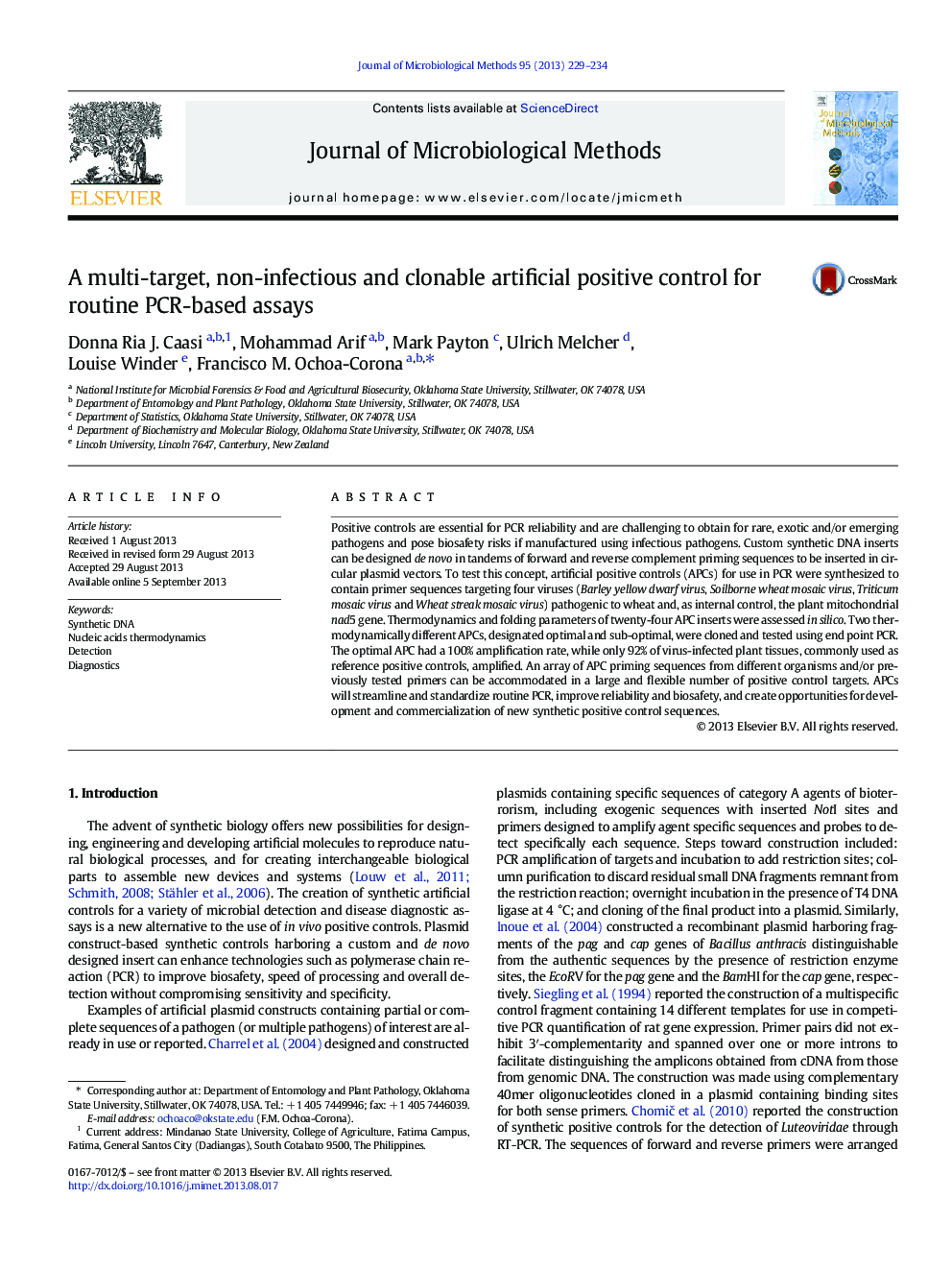| Article ID | Journal | Published Year | Pages | File Type |
|---|---|---|---|---|
| 2090041 | Journal of Microbiological Methods | 2013 | 6 Pages |
Abstract
Positive controls are essential for PCR reliability and are challenging to obtain for rare, exotic and/or emerging pathogens and pose biosafety risks if manufactured using infectious pathogens. Custom synthetic DNA inserts can be designed de novo in tandems of forward and reverse complement priming sequences to be inserted in circular plasmid vectors. To test this concept, artificial positive controls (APCs) for use in PCR were synthesized to contain primer sequences targeting four viruses (Barley yellow dwarf virus, Soilborne wheat mosaic virus, Triticum mosaic virus and Wheat streak mosaic virus) pathogenic to wheat and, as internal control, the plant mitochondrial nad5 gene. Thermodynamics and folding parameters of twenty-four APC inserts were assessed in silico. Two thermodynamically different APCs, designated optimal and sub-optimal, were cloned and tested using end point PCR. The optimal APC had a 100% amplification rate, while only 92% of virus-infected plant tissues, commonly used as reference positive controls, amplified. An array of APC priming sequences from different organisms and/or previously tested primers can be accommodated in a large and flexible number of positive control targets. APCs will streamline and standardize routine PCR, improve reliability and biosafety, and create opportunities for development and commercialization of new synthetic positive control sequences.
Keywords
Related Topics
Life Sciences
Biochemistry, Genetics and Molecular Biology
Biotechnology
Authors
Donna Ria J. Caasi, Mohammad Arif, Mark Payton, Ulrich Melcher, Louise Winder, Francisco M. Ochoa-Corona,
